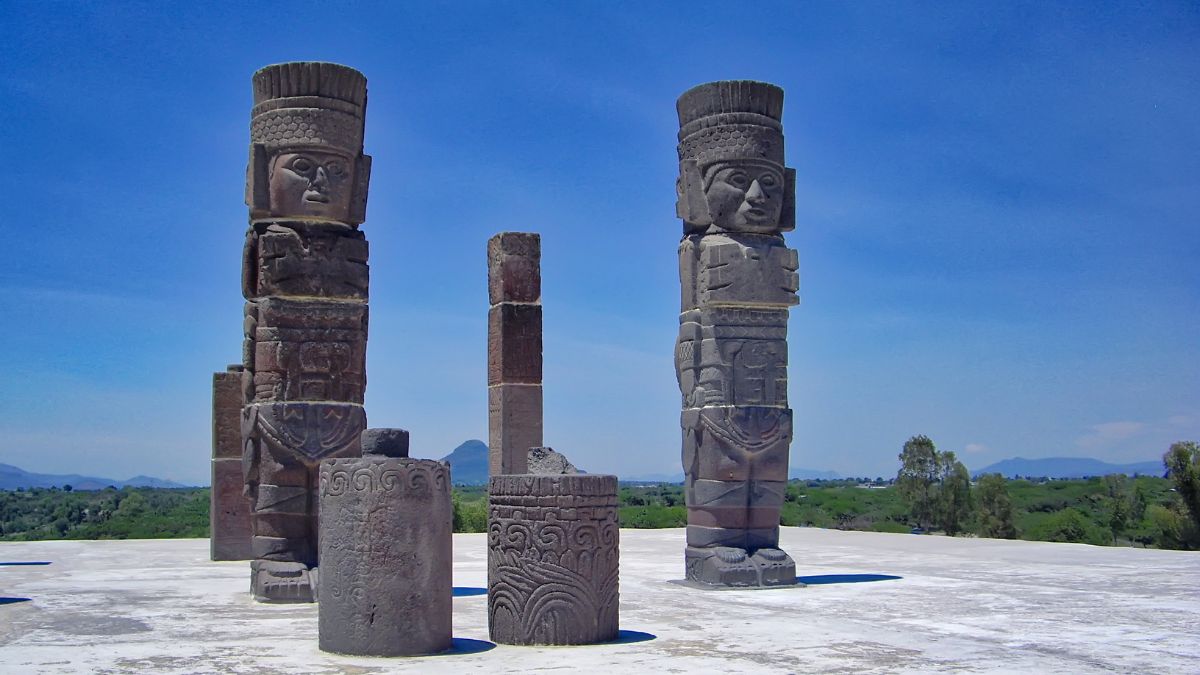Kalidasa (Classical Sanskrit Literature)
Kalidasa (Classical Sanskrit Literature)
The Aztec Empire and the City of Tenochtitlan

The Aztec Empire and the City of Tenochtitlan
In the heart of what is now Mexico City, amidst the sprawling modern metropolis, lie the echoes of a civilization that once mastered the art of living in harmony with the elements, a people whose architectural, astronomical, and cultural prowess was so advanced it still leaves us awestruck. This was the Aztec Empire, and at its center was the magnificent city of Tenochtitlán, a marvel of engineering that seemed to float like a mirage on the waters of Lake Texcoco.
Imagine, if you will, a city designed not just to exist within nature but to be a mirror of the heavens above. The Aztecs, with their deep understanding of the cosmos, laid out Tenochtitlán in alignment with celestial bodies, creating not just a city but a cosmic center where the earthly and divine converged. The Templo Mayor, a towering pyramid at the heart of the city, was not merely a place of worship but a symbol of the Aztecs’ intricate relationship with the gods and the cycles of the universe.
But the wonder of Tenochtitlán was not just in its grand temples or its alignment with the stars. The city was a testament to the Aztecs’ ingenuity in conquering their environment. Surrounded by water, they constructed a network of canals that served as streets, with canoes gliding through, carrying goods and people. Ingenious agricultural techniques, such as the chinampas or floating gardens, allowed them to cultivate food on the lake’s surface, creating a self-sustaining metropolis that was a vision of agricultural innovation.
The grandeur of Tenochtitlán was matched by its bustling marketplaces, the most famous being Tlatelolco, where thousands gathered to trade goods from across the empire. Here, the air was filled with the sounds of barter, the scents of herbs and flowers, and the vivid colors of textiles and feathers, a testament to the empire’s vast connections and wealth. It was a place where the pulse of the Aztec world could be felt, vibrant and alive.
And yet, despite its beauty and sophistication, the story of Tenochtitlán is also one of tragedy. The arrival of Spanish conquistadors led by Hernán Cortés in the 16th century marked the beginning of the end for this magnificent city. Through a combination of military might, disease, and alliances with local tribes disillusioned by Aztec rule, the Spaniards managed to capture and eventually raze Tenochtitlán, building what would become Mexico City on its ruins.
Today, the remnants of Tenochtitlán lie hidden beneath the streets of Mexico City, a ghostly reminder of what was once the heart of a vibrant civilization. Archaeological discoveries continue to unveil the mysteries of this ancient city, offering glimpses into the lives of its inhabitants and the splendor of their achievements. The Aztec Empire may have fallen, but the legacy of Tenochtitlán endures, a testament to human ingenuity and the indomitable spirit of a people who built a city that was a jewel of the ancient world.
The tale of Tenochtitlán is not just a chapter in history; it is a story of human aspiration, a reminder of what can be achieved when we harness the power of our environment and reach for the stars. It stands as a beacon, inspiring awe and wonder, a bridge between the past and present, inviting us to ponder the marvels of human civilization.